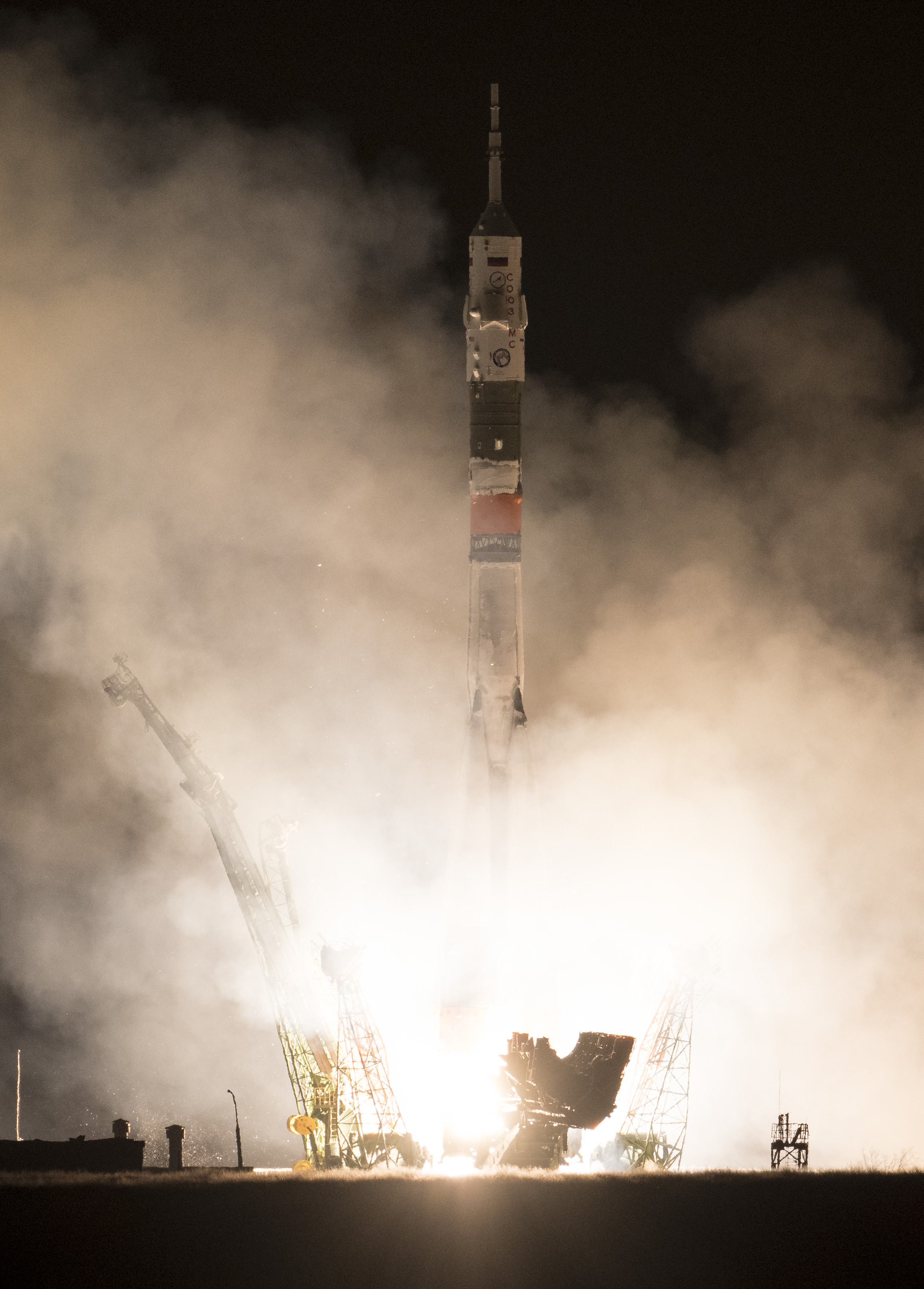Soyuz Rocket Launches US-Russian Crew to Space Station

Two NASA astronauts and a cosmonaut are on their way to the International Space Station (ISS).
Americans Drew Feustel and Ricky Arnold and Russian Oleg Artemyev launched aboard a Russian Soyuz spacecraft from Baikonur Cosmodrome in Kazakhstan today (March 21). The craft was carried skyward by a Soyuz rocket, which lifted off at 1:44 p.m. EDT (1744 GMT; 11:44 p.m. local Kazakhstan time).
Feustel, Arnold and Artemyev are scheduled to arrive at the orbiting lab Friday afternoon (March 23). [In Photos: Space Station's Expedition 55 Crew in Orbit]
When they get there, the trio will boost the station's population to its full complement of six crewmembers. At the moment, the ISS is occupied by cosmonaut Anton Shkaplerov, commander of the current Expedition 55; NASA astronaut Scott Tingle; and Norishige Kanai of the Japan Aerospace Exploration Agency.
Feustel, Arnold and Artemyev are all veteran space fliers. Arnold flew on the STS-119 mission of the space shuttle Discovery in 2009, and Feustel has two shuttle jaunts under his belt, including STS-125, the final Hubble Space Telescope servicing mission. That flight lifted off in May 2009, aboard the orbiter Atlantis.
Artemyev has been to the ISS once before, spending 5.5 months aboard the orbiting lab in 2014 as a member of expeditions 39 and 40.
The newcomers won't have much time to relax after they reach their destination. For one thing, they'll start helping out pretty much right away on the hundreds of scientific experiments currently underway aboard the orbiting lab. And Feustel and Arnold are scheduled to conduct a spacewalk on March 29, to replace some cameras and install wireless antennas on the station's exterior, NASA officials said.
Breaking space news, the latest updates on rocket launches, skywatching events and more!
The crewmembers will also soon welcome a robotic visitor to the ISS — SpaceX's uncrewed Dragon cargo capsule, which is scheduled to launch toward the orbiting lab on April 2.
The Soyuz has been the only astronaut ride available to and from the ISS since the space shuttle fleet was grounded in 2011. But that could change soon.
Both SpaceX and aerospace giant Boeing are developing astronaut taxis under multibillion-dollar NASA contracts, and these vehicles may be ready to start crewed test flights before the end of the year, representatives of both companies have said.
Follow Mike Wall on Twitter @michaeldwall and Google+. Follow us @Spacedotcom, Facebook or Google+. Originally published on Space.com.

Michael Wall is a Senior Space Writer with Space.com and joined the team in 2010. He primarily covers exoplanets, spaceflight and military space, but has been known to dabble in the space art beat. His book about the search for alien life, "Out There," was published on Nov. 13, 2018. Before becoming a science writer, Michael worked as a herpetologist and wildlife biologist. He has a Ph.D. in evolutionary biology from the University of Sydney, Australia, a bachelor's degree from the University of Arizona, and a graduate certificate in science writing from the University of California, Santa Cruz. To find out what his latest project is, you can follow Michael on Twitter.

